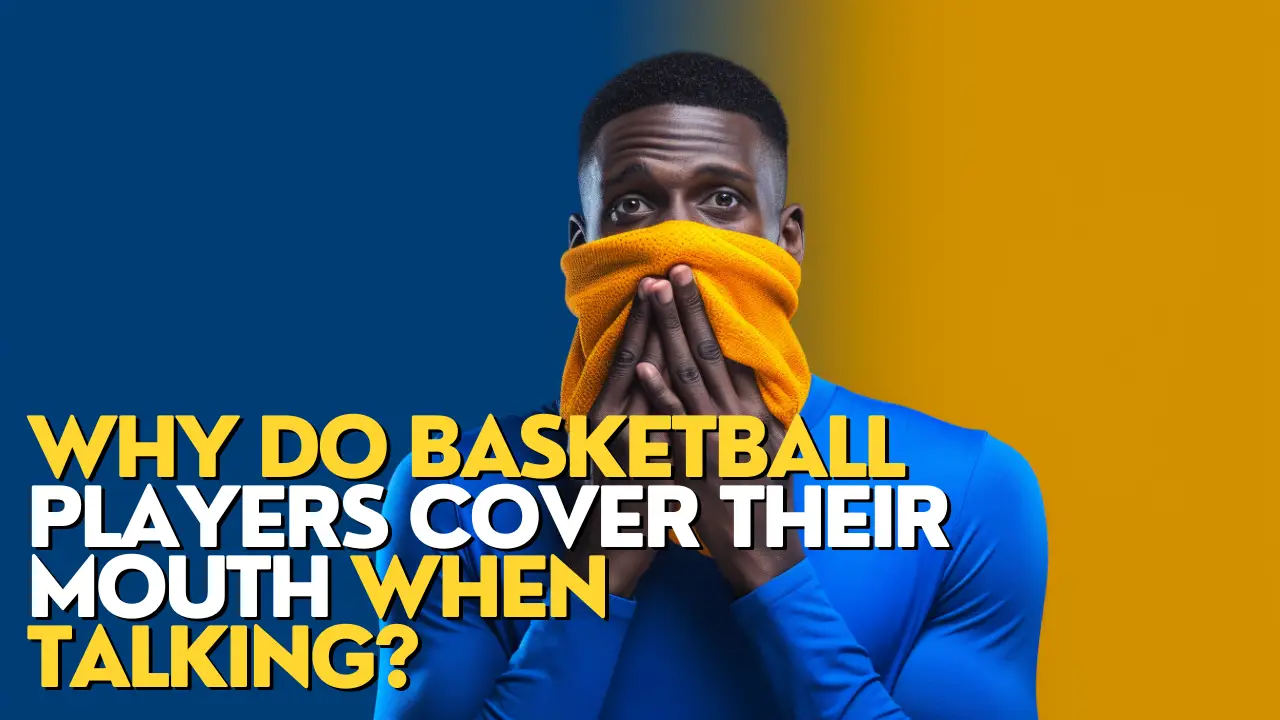The layup is the most fundamental shot in basketball. It’s performed by running towards the basket, jumping, and laying the ball into the hoop — usually, off the backboard. Yet, as simple as it may sound, you can still do the layup in various ways. There is an underhand layup, and then there is an overhand layup. What is the difference between these types of layups though? And which one is better?
It’s true that the underhand layup is different from the overhand layup. But there is no telling which one is “better”. Both types of layups are widely used, and each of them is suitable in different game situations. There are use cases where the underhand layup is often required, and there are use cases for the overhand layup, too. Let’s go deeper and look at each one of those.

Use Cases For The Underhand Layup
The underhand layup is typically harder to learn and score with. Nevertheless, it’s an essential skill for basketball players to master, because many other types of layups, as you’ll see, utilize an underhand motion.
The most common use case for the underhand layup is when you’re attacking at a fast pace and can’t slow down to shoot in a more fluid motion, and from a better angle. The underhand layup allows you to quickly lay the ball up into the hoop, without having to worry much about the accuracy of your shot. Since you’re only using one hand, the shot becomes easier to control and to score than it would be with the two-handed overhand layup.
A great use case for the underhand layup is when you’re attacking and there’s a defender on your back. With this type of layup, you’re extending your shooting hand towards the basket, and it’s way harder for the defender to reach for a block shot.
Another use case is when you’re attacking at an angle, and not in a direct motion to the hoop. A good practice is to use the backboard, so make sure you are aiming for the top corner of the backboard box. The release angle of the underhand layup in this case is better than it would be if you were almost under the basket — so you’re getting the softer touch from the lift of the ball (instead of pushing the ball in an overhand layup). It also makes it easier to score at faster speeds, like in the first case we discussed.
It’s a common case to miss an underhand layup, and many coaches consider it a misunderstood shot, so it’s less often taught. But the reason for missing is understandable: you try to shoot it with one hand without your off hand, which makes it harder to handle. The focus on making sure you handle the ball correctly could distract you from looking up at the hoop, and makes it harder to finish.
However, practice makes perfect, and skilled players have nicknamed the underhand layup the “true layup” — because when you do it correctly, you can actually lay the ball up and in with ease.
Use Cases For The Overhand Layup
The overhand layup is the most common layup technique in basketball, and the one that most coaches will teach as the fundamental move. It is basically shot like a regular shot, with the shooting elbow under the ball, and the palm facing toward the rim as the ball is released.
The use case for the overhand layup is when you jump closer to the basket and there is not enough space for other moves. It’s also quite intuitive, and you would naturally lay the ball up with the overhand motion.
Another use case would be when you’re almost under the basket, and your only opportunity to shoot is straight up. Imagine you’re standing or grabbing a rebound in this position — putting up an overhand layup off the backboard in this case would be the most effective way to score.
Of course, you always have choices. Not that you’d pause and think, but with experience you’ll be making the correct decision automatically. Which layup to execute will mostly depend on your position in the paint, how far you’ll jump from, and your footwork, the angle you’ll be attacking from, how far the basket will be, where the defense will be and where you’ll jump from.
How To Practice Both Underhand And Overhand Layups
To practice both underhand and overhand layups, start developing your footwork without dribbling the ball. When you get comfortable, add dribbles.
For a right-handed layup, jump off your left foot, and for your left-handed layup, jump off your right foot.
Remember — the ball starts at the chest in all layups. It’s especially easy to remember if you truly love this game: just “keep the ball close to your heart”. And keep your eyes on the backboard, aim for the top corner of the box when you’re releasing the ball. Get to this point where these things are automatic, then work on your form and footwork again.
Add distance, dribbles, start as far as half court — and keep your head up as you attack. Try different angles at the basket, try going at a faster speed . Repeat.
What’s more important, try to alternate underhand and overhand layups as you practice. Check out these drills on YouTube for inspiration:
How to: Finish At The RIM!!! Daily 3 Minute LAYUP ROUTINE (Basketball Training Drills AT HOME)
Are There Any Other Types Of Layups?
The underhand and the overhand layups are not the only layups that could be used in basketball though. Your game would definitely benefit if you learn the other types of layups, and we’ll review them below.
Reverse Layup
The reverse layup is an attacking move in which the ball is released from the side of the player and then shot from behind or with the back facing the basket. If you’re a serious hooper — you should master this type of layup. It’s a great way to handle a crowded lane when you can’t force your way through.
The reverse layup allows you to extend your arm and get the ball away from the defender when you shoot it. The rim would also serve as an additional way to protect the shot if you perform the backhand reverse layup. That is done by driving along the baseline and finishing on the other side of the rim.
Make sure to get the good angle on this one, and let the ball hit high on the backboard after you release it. Work on perfecting it, and you’ll see what angles work better.
Power Layup
The power layup is a powerful and effective move, with more shooting control than most shots. And most of the time it’s not even a layup — it’s more of an acrobatic move. To perform it, you step through to the basket, jump straight up off both feet, and explode with power for the layup.
To get the power layup right, you should be utilizing the momentum, getting closer to the basket — and releasing the ball at a higher point of the jump.
The use case for the power layup is any situation when there is a lot of contact. A great way to get an “and one”! Another use case would be to do the power layup after a shot fake under the rim.
Eurostep Layup
The Eurostep layup is probably the most difficult layup there is. It’s considered a step-through-move due to the sophisticated footwork involved before you’re getting to actually release the ball. The motion of the legs in the Eurostep and the step sequence may vary, but usually it’s a lateral step first, and then a frontal step. As you’re taking the steps, the ball enters and exits the hand as it’s being released.
The goal is to throw the defender off with the steps you take, and to score the layup when they’re off-balance. The key here is to be light on the feet and be fast, trying to set a rhythm for yourself.
When you practice this one, make sure to work on the position of the ball. It should stay close to your body, not allowing the defender to reach for it. And when you take the steps try to keep your eyes on the front of the rim, so you can time the release correctly.
Floater
The floater is a shot with a softer arc, used to fight against bigger and longer defenders. The release point of the ball is in the mid-air, around the foul line area, giving the shooter more space and time to shoot.
If you can master the floater, and if you can read the defender well and choose the right arc — it could be your ultimate lethal weapon, as it’s very difficult to block when performed well.
To practice the floater, pay attention to your footwork: try the one-foot floater, the two-feet floater, the floater off Eurostep. The release matters a lot here: try to get the ball high, and with the softer touch.
Conclusion
As you saw, layups are essential to basketball and mastering them is key to your game. And to answer the initial question — there is no one type of layup that is “better” than the others. Therefore, don’t get stuck in one or two types of layups — mastering several types in the context of your gameplay will benefit you on the court tremendously.
If you like this post, please share it around — and come back for more!





One response to “Underhand Vs Overhand Layup: Which One is Better?”
[…] Over hand and Underhand Layups are both important for certain situations. You want to practice driving to the hoop with your off hand and do variations of both of these layups. You should do one set of 5 overhand layups and then 5 underhand layups. This way you could get used to controlling the ball. […]